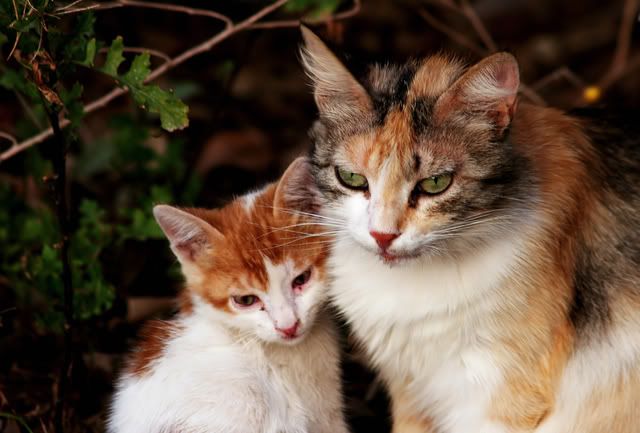
Above: Senior cats inactivity can lead to obesity and other problems.
For some reason the topic of senior pets most often concerns dogs so I thought it was time to give senior cats some focus.
Subtle changes in behavior and activity can alert cat owners to potential problems facing their older felines.
Now most people expect aging animals to show changes in activity level, less inclination to jump, stiffness, and difficulties in getting up. These mobility difficulties may indicate inflammation or early signs or arthritis.
There are other changes to pay attention to. For instance, sudden shifts in body weight should concern you—quick loss or gain should motivate you to visit the veterinarian for a wellness checkup.
More subtle shifts in eating habits or toileting habits are other indicators of a potential problem.
Even the change in something as simple changing sleeping locations and patterns can be early indicators of a health issue.
Older animals may develop new bumps and lumps that should be checked out by a vet but will also experience changes in their hearing, vision, and breath.
You many witness a sensitivity to temperatures.
Any signs of respiratory difficulty such as increased panting or sneezing, and difficulties chewing or swallowing should motivate you to get the animal to the veterinary clinic as soon as possible.
I wrote about Cinderella not too long ago, she is estimated to be between 16 to 18 years of age and a sudden change in weight alerted us to a problem which turned out to be hyperthyroidism.
Other veterinary medical problems include dental disease, liver disease, bladder stones, cancer, and others.
Did you know that one out of 400 cats develops feline diabetes? So it is important to make sure that you pay attention to diet and be aware that obesity and inactivity will put a cat at risk to this disease.
Daily touch can help you to monitor the health of your cat. Get familiar with the weight and check the gums and teeth because it is estimated that about one third of older cats develop dental disease.
Senior cats often do not wear down their claws or use scratching posts as they once did so check the claws because you might find that your cat may need to have his or her claws clipped on a regular basis.
Now just like with senior dogs, there are many products for senior cats and I’ll discuss some useful senior cat products in the next part of this series but let me mention a few standard pet supplies that you should have in your home pet kit.
Grooming supplies should be a standard and if you cannot groom your cat, make sure the feline visits the groomer.
Dental care products and hair ball remedies should be standards and the addition of fatty acid supplements are a good idea.
Dietary needs change over time so changing the diet gradually to meet the activity and age needs is a great way to help manage organ health, skin and coat condition, avoid diabetes, and to mitigate urinary tract infections.
Finally, additional attention to litter box management is important. Daily scooping, once a week cleaning, and additional boxes will help avoid inappropriate elimination and house soiling.


